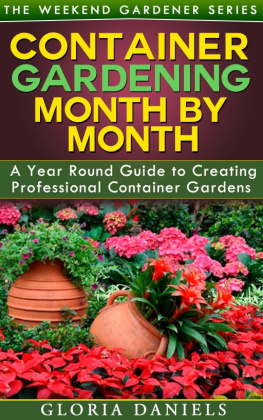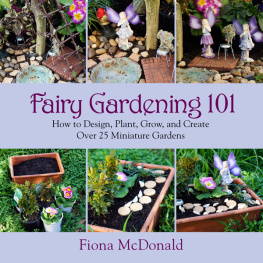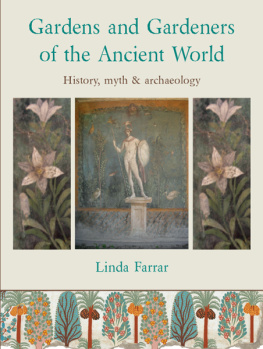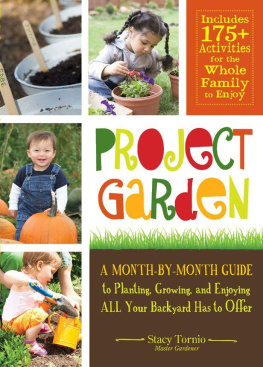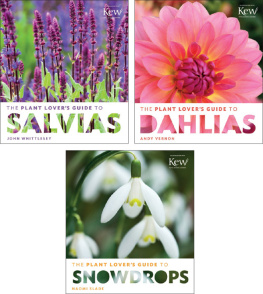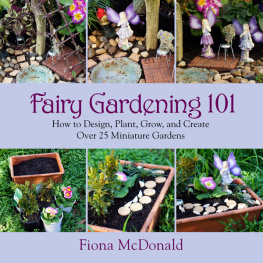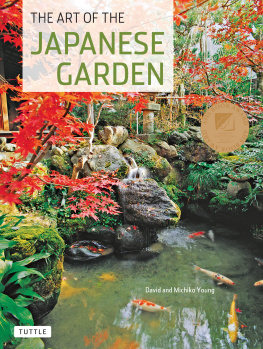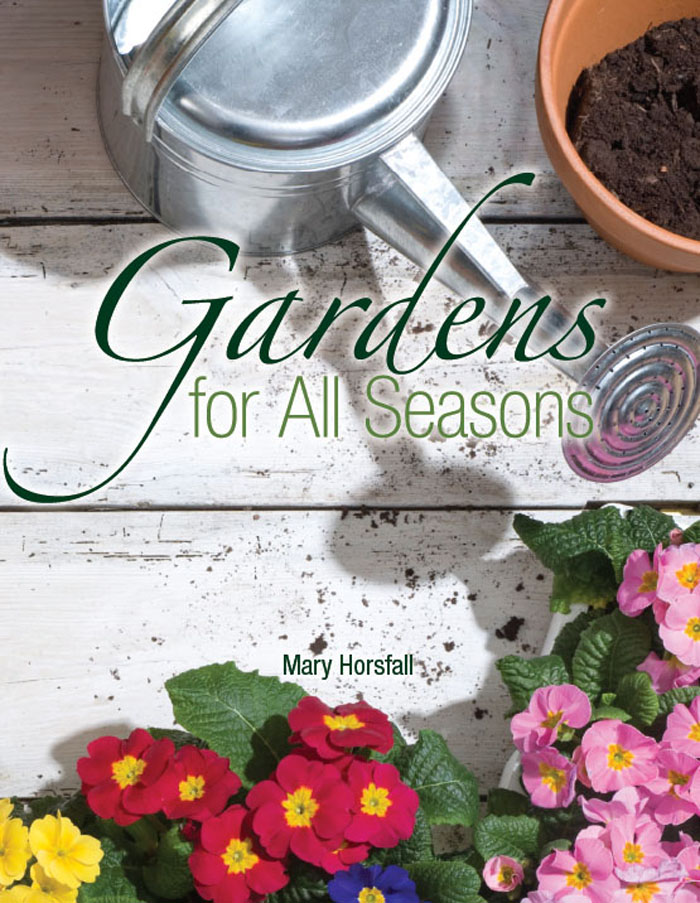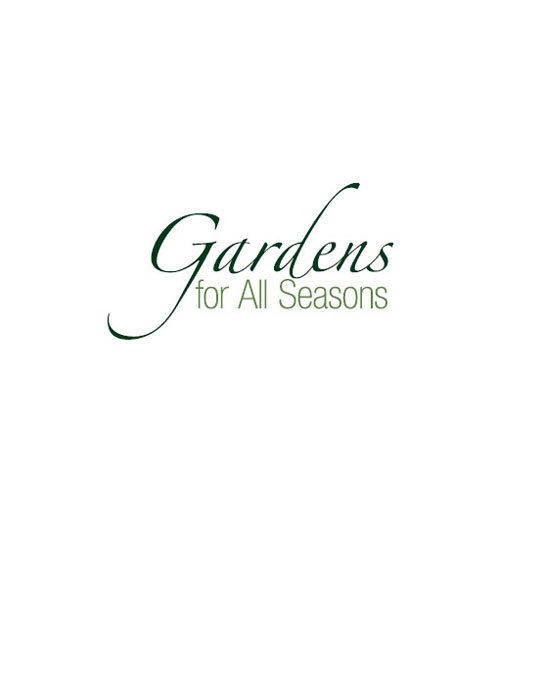
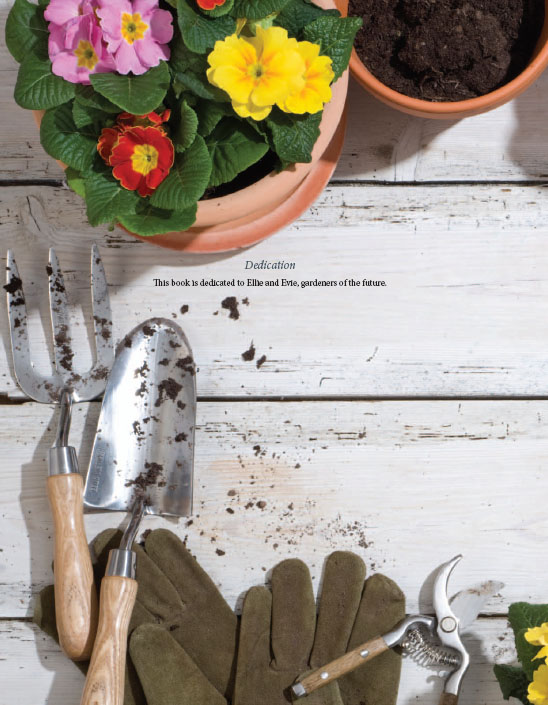

Mary Horsfall 2012
All rights reserved. Except under the conditions described in the Australian Copyright Act 1968 and subsequent amendments, no part of this publication may be reproduced, stored in a retrieval system or transmitted in any form or by any means, electronic, mechanical, photocopying, recording, duplicating or otherwise, without the prior permission of the copyright owner. Contact CSIRO PUBLISHING for all permission requests.
National Library of Australia Cataloguing-in-Publication entry
Horsfall, Mary, 1949
Gardens for all seasons / by Mary Horsfall.
9780643106765 (pbk.)
9780643106772 (epdf)
9780643106789 (epub)
Includes bibliographical references and index.
Gardening Australia.
Organic gardening Australia.
635.0994
Published by
CSIRO PUBLISHING
150 Oxford Street (PO Box 1139)
Collingwood VIC 3066 Australia
Telephone: | +61 3 9662 7666 |
Local call: | 1300 788 000 (Australia only) |
Fax: | +61 3 9662 7555 |
Email: |
Web site: | www.publish.csiro.au |
Cover image by iStockphoto
All photographs are by Mary and Rodney Horsfall unless otherwise stated.
Set in Minion Pro 11/15 and Helvetica Neue
Edited by Anne Findlay
Cover and text design by Andrew Weatherill
Typeset by Andrew Weatherill
Printed in China by 1010 Printing International Ltd
CSIRO PUBLISHING publishes and distributes scientific, technical and health science books, magazines and journals from Australia to a worldwide audience and conducts these activities autonomously from the research activities of the Commonwealth Scientific and Industrial Research Organisation (CSIRO). The views expressed in this publication are those of the author(s) and do not necessarily represent those of, and should not be attributed to, the publisher or CSIRO.
Original print edition:
The paper this book is printed on is in accordance with the rules of the Forest Stewardship Council. The FSC promotes environmentally responsible, socially beneficial and economically viable management of the worlds forests.
Contents
Acknowledgements
Loving thanks to my husband Rodney for always being ready with the camera to shoot pictures of lizards, dragonflies and other garden fauna and flora. The photography is by Rodney and Mary Horsfall, unless otherwise stated.
Cherree Densley made the wonderful woven cornucopia that appears throughout the book.
Customer service at Tesselaar was prompt and helpful with advice about bulbs.
Noela Locarnini allowed me to use her lovely photo of Sturts desert pea.
The stunning photo of jacarandas in Grafton was kindly provided by John Warrell from Clarence River Tourism.
The evocative photo of the lavender harvest was provided by Lavandula Swiss Italian Farm, Hepburn Springs Spa Region, Victoria.
Stacy Irving provided the photographs of bulbs and other floral delights, taken at Floriade in Canberra.
Several gardening magazines were invaluable starting points when it came to suggested planting times for different areas of Australia: Burkes Backyard, Gardening Australia and Your Garden.
Introduction
I invite you to join me in a celebration of gardens and the gardening year. As we meander through a year in the garden together I will give you some guidelines about when to do what in your garden and describe my gardening year. But gardens are about more than a list of seasonal or monthly chores, mowing, weeding and pruning. They are about fun, seasonal celebrations, relaxation, good food and the plants and animals we share our spaces with. I have packed the pages of this book with all manner of garden-related goodies to encourage you to get out and enjoy more good times in the garden, any garden, with family and friends, as well as quiet, contemplative times alone.
Do remember that every garden will have its individual ecosystems and microclimates so that suggestions about timing of various aspects of gardening will be guidelines only. You will soon be able to adjust the suggestions to suit your own circumstances.
In my previous book, Fabulous Food from Every Small Garden, I discussed the concept of food security in an uncertain climate future. At the time of writing, there were bushfires in Western Australia and vast swathes of Queensland, New South Wales and Victoria were only beginning the heartbreaking task of cleaning up and rebuilding after cyclones and floods. Thousands of hectares of crops were lost and many food items rose steeply in price. No doubt, by the time you read this, these natural disasters will have been eclipsed by many others. This underlines the importance of growing your own food whenever and wherever you can. With a little thought and inventiveness, you will be surprised at where you can fit food plants into even a tiny garden. This book will give you even more ideas about when to grow what for best results, so you can fill your pantry and refrigerator with fresh food and your house and garden with beautiful blooms. Your garden can become a productive year-round cornucopia and your life will be the richer for it.

T he cornucopia or horn of plenty is an ancient symbol of fertility, fortune and abundance. The original myth was of a goats horn that would be filled with whatever the owner wished for, but modern depictions of a cornucopia generally use a horn-shaped wicker basket filled with fruits and vegetables. In North America a wicker basket containing the harvest is often used in Thanksgiving festivals.
I think of my garden as a cornucopia of plenty, not just of good things to eat, but of good times spent with family and friends, of flowers and perfumes to delight the senses, of abundant life forms, of learning opportunities and of generous harvests to share. My garden cornucopia overflows with abundance.
Seasonal cycles
Our gardens are inextricably linked to the seasons, the lengthening and shortening days and hours of sunlight and darkness, the searing heat of summer and the brisk cold of winter, the wet and the dry. Cycles of plant growth, life cycles of the wild visitors that share our garden spaces and our own seasonal celebrations and lifestyle all centre around the garden. For those without private garden spaces, public parks and gardens are often a focus of recreation and celebration, and community gardens are increasingly popular centres of camaraderie and productivity.
As the garden changes with the seasons, different jobs assume priority and gardeners are often concerned about whether they are doing things at the right time: Is this a good time to do this job? The truth is that many gardening tasks are quite flexible in their timing. There might be a good time or a best time for some jobs, but I usually work on the assumption that a good time to do something in the garden is when the weather conditions, the seasonal needs of the garden and my available time, energy and motivation all coincide.


